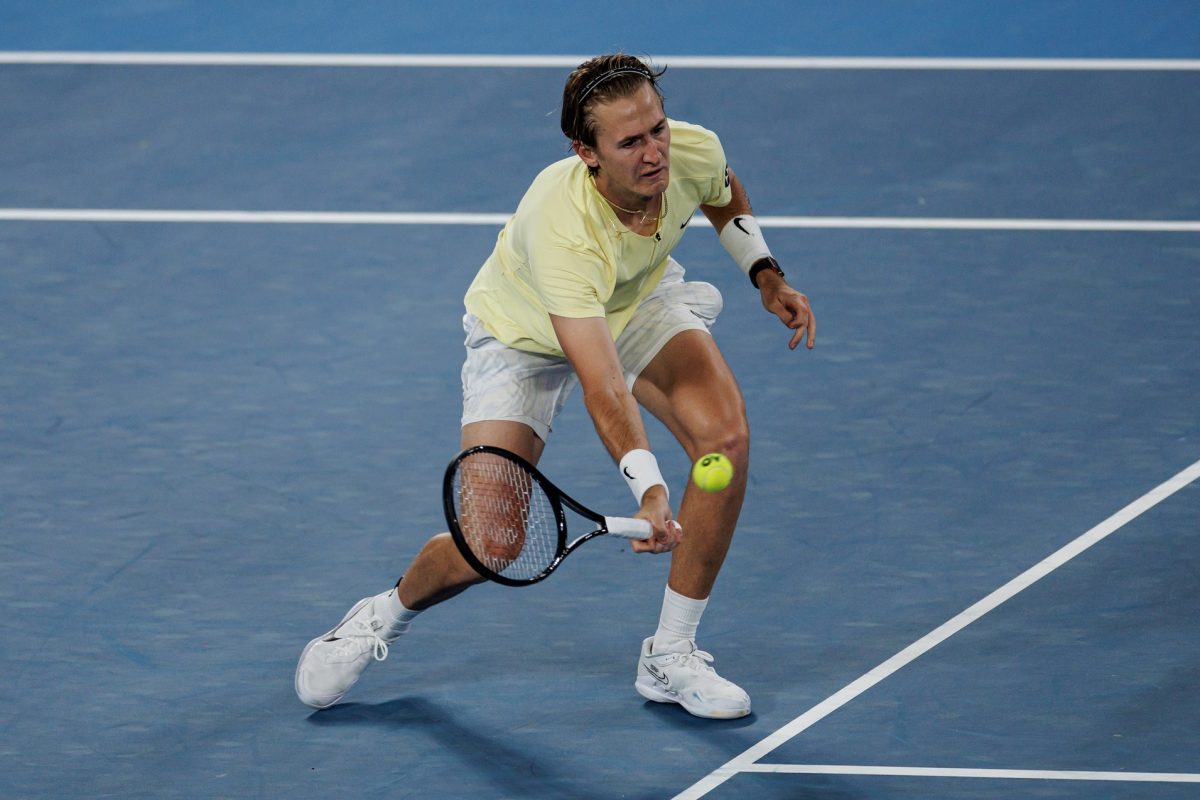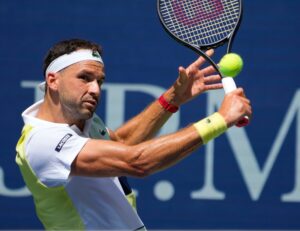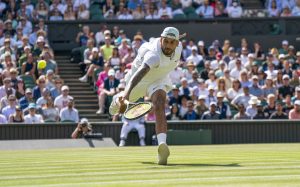For the first time since 1996, there are more than five Americans in the top twenty of the ATP and WTA Rankings. This is the range of talent American tennis has been crying out for. A period of sustained dominance by the Williams sisters, plus the Bryan brothers on the doubles tour, meant that the U.S.A was always racking up Grand Slam titles; however, there remained questions regarding depth. With Coco Gauff lifting the US Open title last year plus Taylor Fritz, Ben Shelton, Tommy Paul, Jessica Pegula, Danielle Collins, Emma Navarro, Madison Keys and Sebastian Korda making up the other nine athletes in the Top 20, the home crowd has reason to be optimistic. Here at Last Word On Tennis, we look at Korda’s chances of success.
Sebastian Korda at the US Open
Truthfully, Korda has never enjoyed much success at the US Open. Perhaps it’s the pressure of the home crowd, the five set format, or end of season fatigue. Either way, he is yet to reach his potential on the Grand Slam stage, particularly in New York. In four appearances he has lost in the first round three times and made the second on just one occasion. With the abundance of talent he possesses, the question becomes: why?
A Learning Curve
Korda is just 24 years old. While this isn’t what we regard as a youngster in the tennis world, he does lack experience on the big stage. Moreover, he has had to deal with his fair share of injuries. In particular, the wrist injury he suffered at the beginning of 2023 was terribly unfortunate.
He had just reached the final of Adelaide and the fourth round of the Australian Open, dismantling Daniil Medvedev by three sets to nil in the process. Upon return, he reached the Queens Club final but exited Wimbledon in the opening round just two weeks later. This was a tough pill to swallow, especially from an identity point of view. In the lead up to SW19, he spoke bullishly of his grass court game, claiming it as his forte and brandishing himself as a contender. While he talked the talk, he failed to walk the walk. Since those comments, he’s suffered two opening round exits.
An upturn in recent form
Yet recent form suggests that he should be taken seriously at this year’s US Open. At Washington he was so impressive, losing just two sets all week en route to securing his second career singles title. It isn’t unusual in tennis to see a surprise winner–the telling factor is whether they back it up. Korda did just that. If anything, his run to the final in Montreal was more impressive than his title in Washington.
Along the way, he defeated some top players including none other than world #4 Alexander Zverev 7-6 1-6 6-4. To lose the second set 6-1 and bounce back showed terrific mentality, as others would have caved at such a sudden change of momentum. While Alexei Popyrin got the better of him 7-6 6-3, it seemed that Korda had run out of steam come the final. For a man who hasn’t consistently reached the business end of tournaments perhaps this is little surprise.
Ahead of the US Open, how does his game style match up to his competitors?
Gamestyle
Stylistically, Sebastian Korda is one of the easiest on the eye across the whole tour. Despite his 6’5″ frame, his movement is impeccable. He glides around the court, similarly to the way Roger Federer did. When split stepping and recovering to the centre he is on his tiptoes, it’s all so elegant. His strokes are smooth and effortless, his shot making a joy to watch.
Any criticism of the American has never been regarding his technique. There are so few flaws in his game. However, mental strength and conditioning have at times been an issue.
Quite often he can fall away from a match from a strong position. When his a-game isn’t working, he offers little resistance. On a good day, he can outhit most on the tour, his base level must improve though. As with all sports, the ability to win when you’re not playing at your highest level is vital. The floor is more important than the ceiling.
How far can he go?
Korda’s potential route to final reads as this: Corentin Moutet, Thomas Machac, Alejandro Tabilo, Carlos Alcaraz, Alex de Minaur, Novak Djokovic, and Jannik Sinner.
With the form he is in, the first three rounds are very winnable. Although, it’s these type of matches at Grand Slams where he has a terrible habit of underperforming. However, he comes into this Major in the best form of his career, so perhaps we’ll see a better version on the big stage.
After that, it looks incredibly tough. While he has improved as of late, he still doesn’t have the game to compete with any of the current top three.
A run to the last 16 would be progress for Sebastian Korda. It doesn’t sound like a glamorous result, but for a player who has consistently fallen short over the five set format, this would be a break in the pattern of disappointment. He has the ability to do so; it’s all about the mental game.
Main Photo Credit: Mike Frey-USA TODAY Sports






